Asana vs Basecamp
Learn more about your options and pick the best tool for your team.
Unsure whether to choose Asana or Basecamp? You've come to the right place.
When it comes to business productivity software, Asana and Basecamp are both great choices. These are two mature and robust solutions that have earned the trust of millions of users over the years. Many teams evaluating collaboration and project management tools find Basecamp and Asana on their shortlist.
But which of them should you choose for your business? In this article, we will take a closer look at both Asana and Basecamp and examine their strengths and weaknesses to help you make the right decision for your company.
Asana and Basecamp compared
Both Asana and Basecamp are designed to help teams collaborate and keep their projects on track. However, they approach this goal very differently.
While they share some of their core features, they also have some fundamental differences that need to be kept in mind when making a decision. Let's dive deeper into what Asana and Basecamp have to offer and also have a look at other alternatives you may want to consider.
Asana
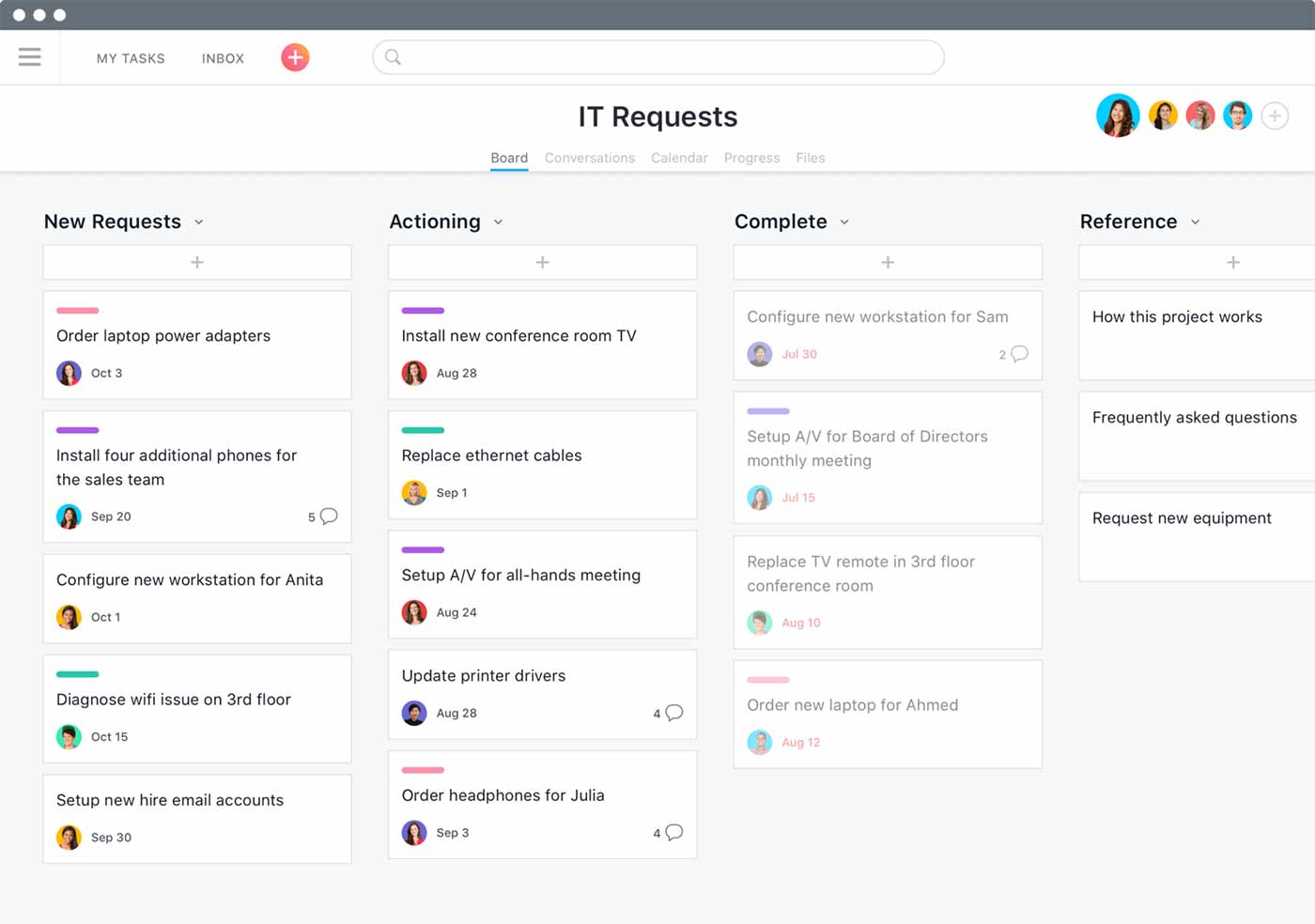
Pricing: Free, advanced features starting from $10.99/user/month
Rating on Capterra: 4.5/5
Asana is a fairly traditional project management tool. Unlike Basecamp, it doesn't try to do too many things at once. It's designed to help your team manage projects in the best possible way and doesn't dilute its focus with file management, group chat, message boards, and so on. It's best used in combination with several other collaboration tools, such as Slack and Google Drive.
Asana stands out thanks to its extensive data visualization options, including boards, lists, timelines, calendars, and Gantt charts. Routine tasks can be automated, saving time and reducing errors. Tasks can have dependencies, making it easy to keep track of what is blocking what. Overall, it's a powerful project management tool, that nonetheless comes with a modern, elegant, and intuitive interface.
Why you might prefer Asana over Basecamp:
As a project management tool, Asana is more powerful and offers more advanced features.
Asana is designed to handle all types of projects, from simple to-dos to large-scale initiatives with multiple stakeholders.
In Asana, you can organize your projects in different visual ways.
Asana offers a generous free plan and flexible per-user pricing, which makes it more affordable for smaller teams.
What users say about Asana:
"Asana had a really good free version and it had so many powerful functions. We would have gone with Basecamp due to its intuitive design, but it cost too much per month. We're very happy with Asana now that we've been in it for a few years. Asana is so diverse in its functions that it meets all kinds of organizational and communication needs. We use it for simple task lists, meeting follow-up tasks, small and large team projects, and so on."
"I found Basecamp a bit clunky to use and I really didn't like how completed tasks could only be viewed by going to another screen. I tried many project management apps but Asana was the clear winner. I really like the way you can structure a project and see what has been done, and what is left to do on one screen. Many apps hide completed tasks but with Asana you see everything. Assigning tasks, due dates, and commenting on tasks is very easy."
Looking for more tools similar to Asana? Check out this list of Asana alternatives.
Basecamp
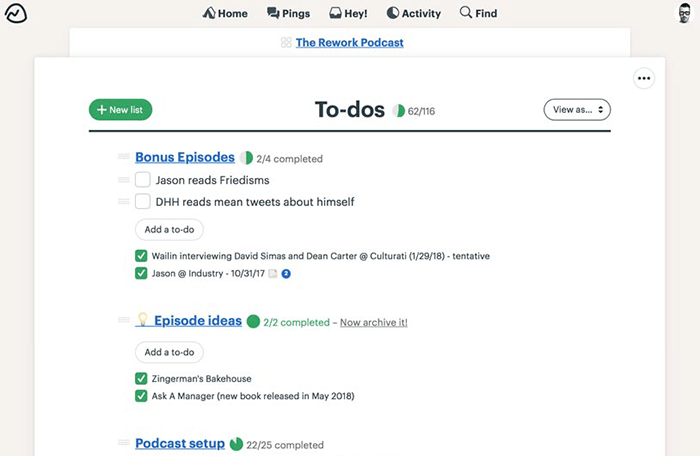
Pricing: $15/user/month or $299/month for unlimited users
Rating on Capterra: 4.3/5
Launched way back in 2004, Basecamp predates Asana and is one of the oldest business productivity tools on the market. While Asana primarily focuses on project management, Basecamp aims to be an "all-in-one toolkit" for remote team collaboration. It brings together to-do lists, calendars, chat, and file management, allowing you to manage entire projects in one place and replace multiple other collaboration tools.
While Basecamp supports more use cases, it lacks the advanced project management features of Asana. Depending on the type of projects you are planning to collaborate on, this might be the right trade-off for your team.
Another unique aspect of Basecamp is its flat pricing. While Asana charges a per-user fee that can add up very quickly, you can access all of Basecamp's premium features at a flat price of $299 per month. This makes it a very cost-effective option for large and fast-growing organizations.
Why you might prefer Basecamp over Asana:
Basecamp supports more use cases than Asana, allowing you to share files and communicate, in addition to managing projects.
Basecamp makes it easier to collaborate with external partners and clients.
Basecamp charges a flat monthly fee, making it a scalable solution for growing teams.
What users say about Basecamp:
"The number #1 reason we chose Basecamp over Asana was obviously the fixed price of the product. We found value in collaboration and getting things done with smaller teams and smaller projects. We can easily add clients and share only the data that we need."
"We chose Basecamp because it seemed better suited for the team communication that we were going for. The Message Board has worked perfectly for us. However, if our needs were more focused on task management, then I think Asana would have been a better tool. Basecamp's task management is essentially a team-based to-do list that is fine but lacking some of the advanced features of its competitors."
Looking for more tools similar to Basecamp? Check out this list of alternatives to Basecamp.
Other alternatives
It should be mentioned that your options are not limited to just Asana and Basecamp. There are many other great collaboration and project management apps that can serve you just as well — or even better. For example, if you like the idea of organizing all your work in a unified workspace like Basecamp, but prefer the modern and user-friendly design of Asana, consider Nuclino.
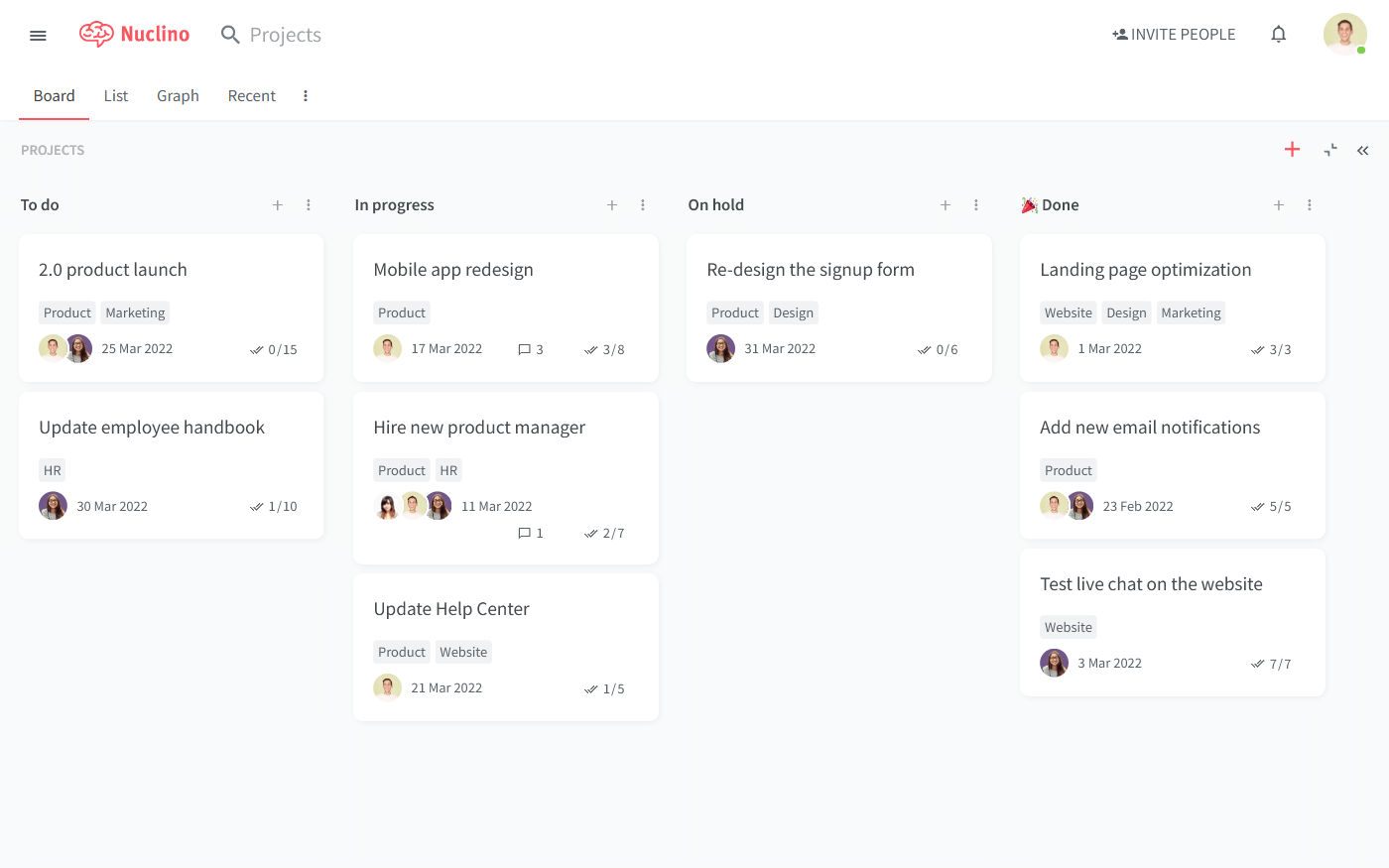
The interface of Nuclino is clean and clutter-free, with everything you need and nothing you don't. It works right out of the box and requires almost no configuration, so your team can be productive from day one.
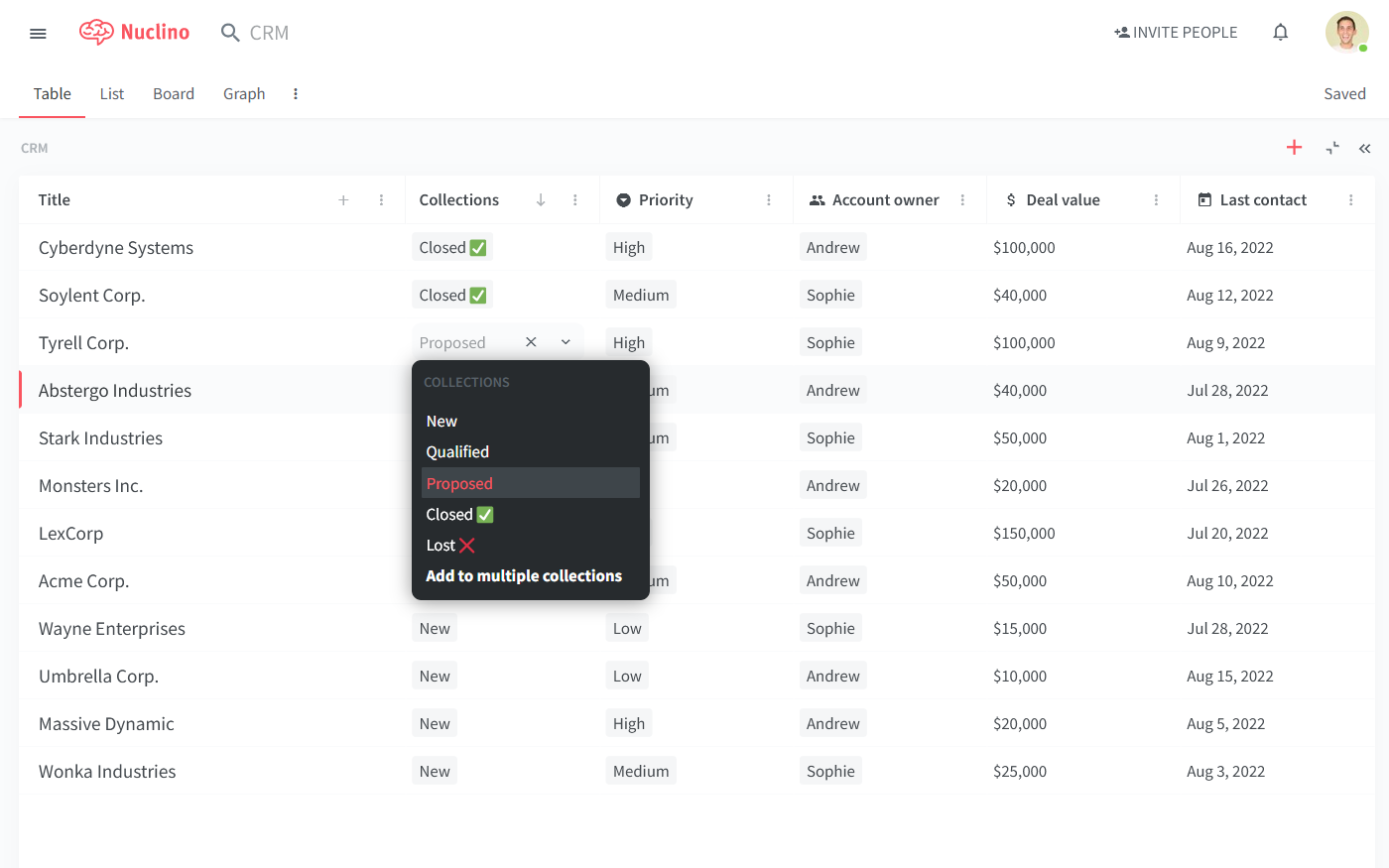
Like Basecamp, Nuclino is a unified collaboration tool that covers more than just project management. It's a versatile solution that allows you to build your internal knowledge base or team wiki, collaborate on internal documentation, take meeting minutes, onboard employees, and more. Nuclino works like a collective brain, allowing you to bring all your team's work together in one place and collaborate without the chaos of files and folders, context switching, or silos.
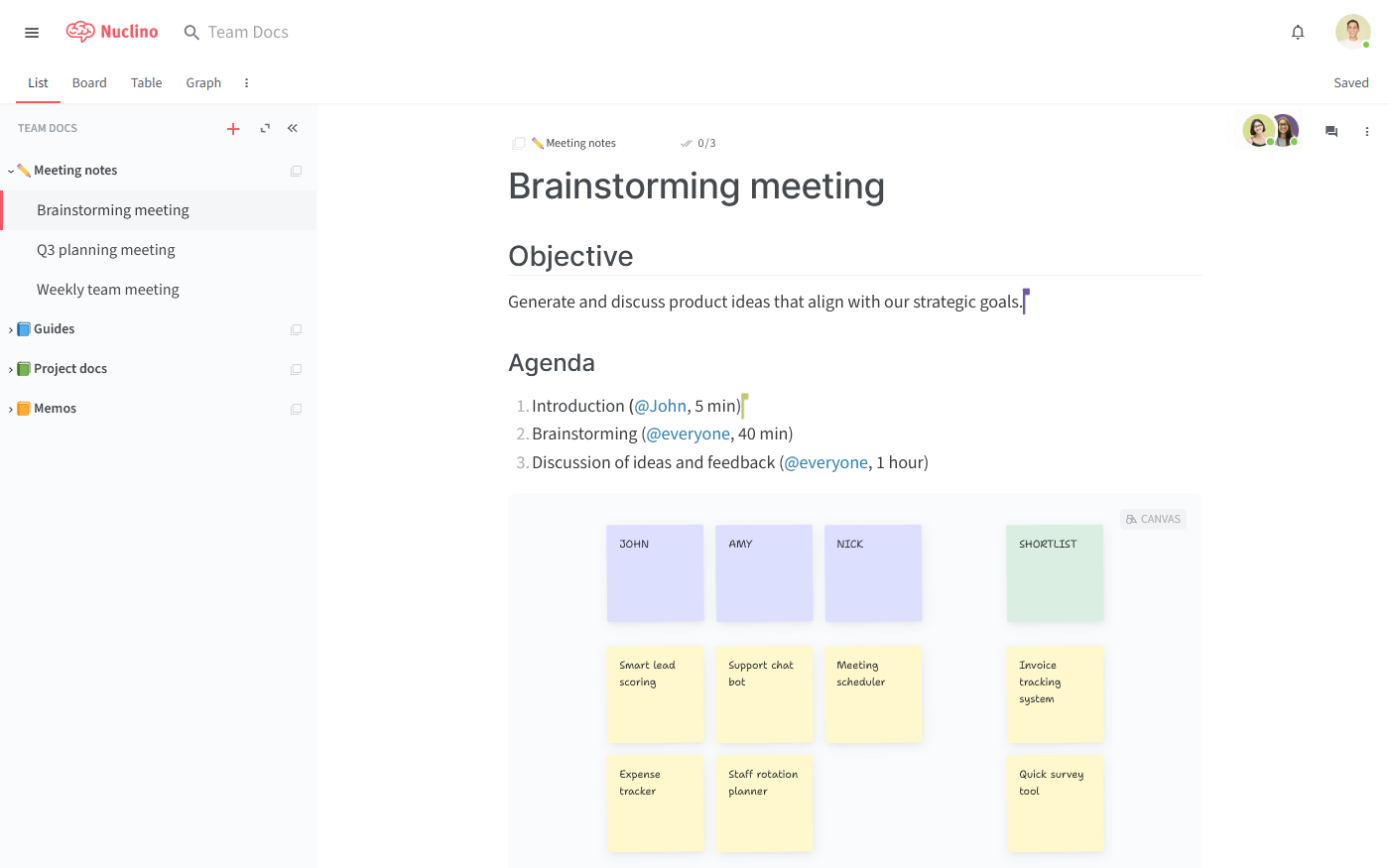
Like Asana, Nuclino allows you to organize your work visually, using a nested list, a Kanban board, a table, or a mindmap-style graph. Every Nuclino item is a real-time collaborative document where you can add notes, create to-do lists, set due dates and reminders, embed files, and more, managing and simultaneously documenting your projects in one place. You can use comments to exchange feedback directly in Nuclino and preserve the context of every decision.

Asana vs Basecamp: So which is better?
There is no definitive winner when you compare Basecamp and Asana. Both tools are popular for different reasons, and the best choice depends on your unique requirements and preferences. If you are looking for a modern, powerful tool with advanced project management features, Asana can be a great option. And Basecamp may be a great fit for teams who like the idea of replacing multiple collaboration tools and bringing their projects, files, and discussions together in one tool.
On the other hand, if you prefer a simpler and faster solution that brings together the best of both worlds, consider exploring other alternatives, such as Nuclino. We hope this article has made your decision a little easier.
Ready to get started?
